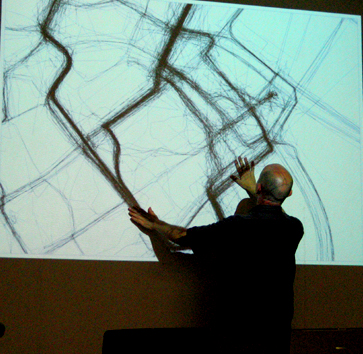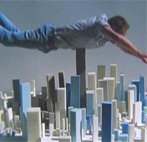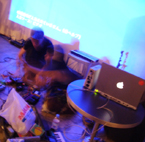bairdcast media : a history of machine translation
by Yuko Mohri presented at AV Festival 2008
A collaboration with /sLab, Sunderland University

This project aimed at promoting cultural exchange between Japan and UK and to give opportunities to a young artist who is already a rising star in the media art world. The Tokyo based artist Yuko Mohri made a three month residency at /sLab, Sunderland and was commissioned to make a new work for the AV Festival 2008.
The theme of AV Festival was this year ‘Broadcast’, and Yuko began to examine the history and development of broadcasting. John Logie-Baird was a pioneer of broadcasting systems, who in 1925 demonstrated the first ‘television’ broadcasts.
based on an electro-mechanical system of photocells and spinning shutters, known as the ‘televisor’.The first images to be 'televised' were of the head of a ventriloquist's dummy nicknamed "Stooky Bill". The workings of the machine were very much exposed, revealing the processes involved in transporting the image from one point to another, unlike the computers and electronic products of today which enclose these processes and make them invisible.
Yuko Mohri took her interest in the early developments of broadcasting as the starting point for her commission. Today’s technology is more rather a black box, it has a pre-determined function, we can not see the workings of that function, let alone understand them and very few of us attempt to change that function. Mohri takes the function of technology and attempts to make it dysfunctional in some way. Her work breaks down the black box, dissects it and reassembles it to find alternative ways in which it can be used.
In this project she exposes the mechanics of the digital, creating her own broadcast system using a computer, scanner and printer. Emulating the system of the televisor but through the 'misuse' of digital technologies.A fragmented image of Stooky Bill rotates in various parts upon the bed of a scanner, the scanned image is then sent by wireless connection to a printer mounted on wheels, which prints out the image one after another one long roll of paper, gradually ‘eating’ the paper and moving closer and closer to the site of broadcast. This work highlights the alternative uses technology can be put to and challenges us to think more of the mechanics and processes involved in this utilization.














